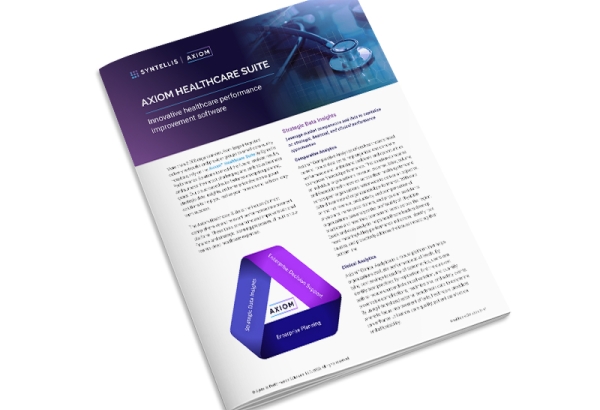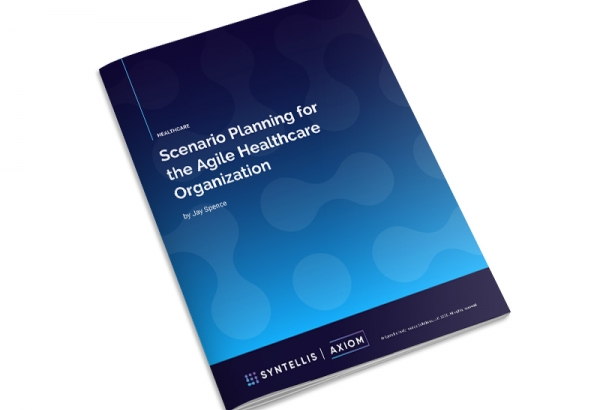In their modeling, healthcare organizations should clearly identify what they “know” and what they do not know.
Managing for change and an uncertain future is becoming the norm for healthcare organizations. As industry reform, disruption, and rising competitive pressures continue to squeeze already tight operating margins, hospital leaders are refocusing their financial planning efforts to account for the many unknowns ahead.
In decades past, the financial planning process typically involved a relatively straightforward strategic-financial forecasting exercise. Historical trends in traditional key drivers—such as population growth, inpatient and outpatient volumes, inflation, and payment rates—were projected forward to form the foundation of a financial plan.
In today’s healthcare environment, however, the process is evolving into a more complex integrated planning activity that spans finance, operations, and strategy, each of which has new dimensions to consider.
The definition of the “key drivers of change” should be expanded to encompass the numerous strategic initiatives that will impact the organization’s financial performance in both the short and long term. Healthcare leaders should incrementally test the impact of specific major strategies or changes on the organization’s ability to bridge the gap between projected results and target performance goals.
Modeling Initiatives as Key Drivers
As one major initiative, many healthcare organizations today are faced with the need to dramatically alter their cost structures. Future costs can be difficult to anticipate. Ongoing or planned cost reduction activities—such as initiatives to improve labor management in response to shifting patient demand, or reducing clinical variation in the use of high-cost physician preference items—should be integrated into financial planning processes, along with traditional drivers of change previously mentioned.
Certain key drivers will be more readily definable and predictable, while others are more of a moving target—such as the speed of shifts to value-based payment arrangements. In their modeling, healthcare organizations should clearly identify what they “know” and what they do not know.
Finance professionals can work collaboratively with operational leaders and clinical process improvement teams to help maximize the accuracy of financial projections related to strategic initiatives. The key is to draw data from cost accounting systems and clinical benchmarking tools that identify savings targets that are reasonable, achievable, and sustainable over time.
Testing Alternative Views of the Future
Incorporating the projected impacts of strategic initiatives in the financial plan should be done in a way that considers multiple possibilities. At any given time, organizations typically have dozens (or more) of ongoing, planned, or proposed initiatives that will have an array of projected impacts on various aspects of operations. To properly guide strategic decision making, those projected impacts must be evaluated cumulatively, as well as in a variety of combinations across a range of possible scenarios. At this time, financial modeling is more about ranges of outcomes and probabilities than it is about absolutes.
Effective planning enables finance professionals to adjust for changes in payment or project different levels of potential results. Making these projections across a variety of scenarios allows organizations to compare the impact of those different levels of results to the income statement, balance sheet, and statement of cash flows. Testing scenarios through this iterative process is invaluable in helping healthcare leaders define an optimal portfolio of strategies to support business and financial goals for a sustainable financial plan.
Achieving Results with Initiatives-Based Planning
Incorporating the projected results of strategic initiatives into financial planning as discussed here gives healthcare leaders a more focused view of the future. It allows them to consider a range of possibilities and to be more agile in preparing for and adapting to multiple outcomes. Armed with this information, organizations are better able to steer their own future state.
This approach also allows healthcare leaders to quickly translate targets into identifiable operational activities. For example, an organization that is pursuing reduced clinical variation as a high priority can work with quality and process improvement teams to identify opportunities and gain buy-in using data from scenario modeling and analytics comparing physicians’ performance to established benchmarks.
Modern planning tools can help organizations effectively structure performance reporting to show progress toward identified targets and to compare results to projections. This helps healthcare leaders, trustees, and other stakeholders better understand the correlation between market and operational forces and the organization’s financial performance.
Financial plans and the underlying assumptions associated with them are constantly in flux in today’s dynamic healthcare environment. Organizations that broaden their definition of the key drivers of change by incorporating realistic and reliable data on initiative targets best position themselves for success in an uncertain environment. To stay competitive, organizations must reevaluate projections on an ongoing basis to address changing competitive conditions and financial performance.
This article originally appeared in the Fall 2016 issue of Strategic Financial Planning.
Copyright 2016 by Healthcare Financial Management Association, Three Westbrook Corporate Center, Suite 600, Westchester, IL 60154.
For more information, call 800-252-HFMA or visit hfma.org.
Your peers also read:

7 Practical Tips to Tame Unruly Organizational Budget Processes

Financial Planning and Decision Support Software for Healthcare Organizations


